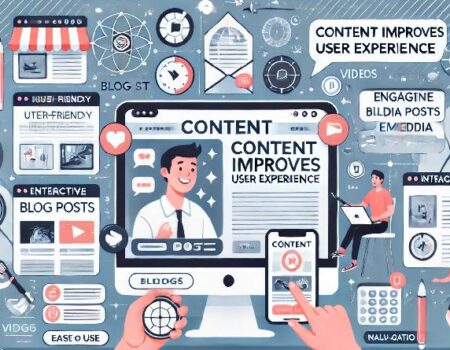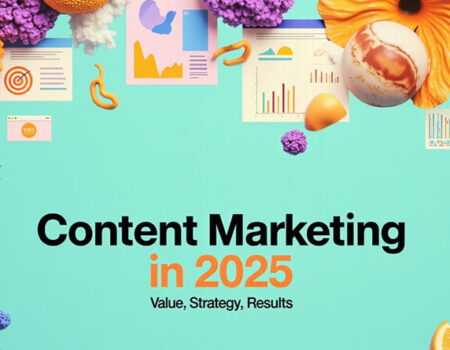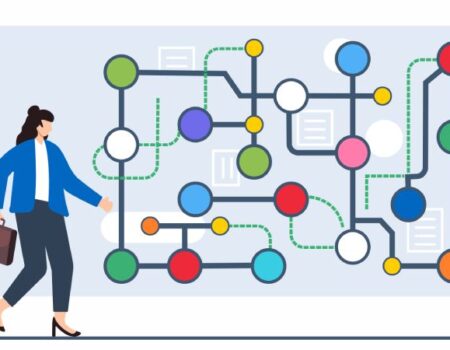Google Quality Raters Now Assess Whether the Content is AI-generated
Google is now asking its quality reviewers to look out for pages where the main content was made using automated tools or generative AI. These pages are often rated as the lowest quality. This information was shared by John Mueller, Google’s Senior Search Analyst, during an event in Madrid.
Aleyda Solis shared this update on LinkedIn. The change is part of Google’s new Search Quality Rater Guidelines, updated in January 2025. If you didn’t catch all the updates, here’s a clear summary of the key points.
1. Google Defines Generative AI
For the first time, Google has included a clear explanation of what generative AI is. This appears in Section 2.1 of the new guidelines.
Generative AI is a type of machine learning. It uses examples to learn how to create new things, such as text, pictures, music, or code. Different tools use these models to make content. Google says it can be helpful for creating content, but it can also be misused.
2. Google Changes the Way It Talks About Spam
Google has updated how it talks about spammy websites. The old section about auto-generated content (Section 4.6.3) has been removed. Instead, new parts have been added that focus more on large amounts of low-quality content, including those made using AI.
Here are the new types of spam explained in the updated guidelines:
- Expired Domain Abuse (4.6.3): This is when someone buys an old domain name and uses it just to boost their new site, often by adding content that’s not useful to users.
- Site Reputation Abuse (4.6.4): This happens when someone adds content to a site that already ranks well on Google, hoping the new content will rank too even if it’s not high quality.
- Scaled Content Abuse (4.6.5): This refers to creating lots of content quickly, without much effort or creativity. Google mentions AI tools as a common method for this.
- Low-Effort Main Content (4.6.6): This is a new section for content that’s copied or paraphrased with little change, usually using AI or automation. It doesn’t give anything new or useful to readers.
John Mueller focused on this part in his talk. It says that if almost all the content on a page is copied, paraphrased, auto-generated, or just reposted from somewhere else and adds little to no value it should get the Lowest rating. This applies even if the page says where it got the content from.
How Can Reviewers Tell If Content Is AI-Generated?
There’s no exact rule for spotting AI-generated content, but the guidelines do talk about “paraphrased content”:
- Section 4.6.6: It says automated tools can be used to rewrite content from other pages.
- Section 4.6.7: It adds that paraphrased content can be hard to detect. Signs of it include:
- It only shares well-known facts.
- It looks very similar to pages from big sites like Wikipedia.
- It summarizes things like news articles or forum posts without adding anything new.
- It may include phrases like “As an AI language model,” which can be a sign that a tool was used.
3. Difference Between “Low” and “Lowest” Quality Ratings
This new part explains when content deserves a Low rating instead of the Lowest.
- Low: The content is reused, but the creator made some effort to change or improve it.
- Lowest: Most of the content is just copied or paraphrased with no real effort or value.
Google gives examples of content that may seem new but really isn’t:
- Social media posts that are just reposted with no real comment.
- Pages that just embed videos or show “repinned” images with no extra thoughts added.
- List articles like “Best Tools” that are copied from other review lists with nothing original added.
These types of content try to look helpful, but Google says they don’t provide a good experience for users.
4. New Focus on “Filler” Content
This section is about “filler” content. These are parts of a page that seem big or important but don’t actually help the reader.
Filler can make a page look full, but it doesn’t offer real value. Google says that even if the content isn’t harmful, it can still get a Low rating if it makes it hard for users to find the useful parts.
Examples include:
- Filler that distracts from the main content.
- Pages made longer on purpose by adding fluff.
- Layouts where ads or long intros hide the actual helpful content.
Reviewers are asked to look at how a page is organized and whether it helps users find what they’re looking for.
5. Google Tightens Rules on Misleading or Exaggerated Claims
There’s a new section that talks about misleading or exaggerated claims about a website or its creator. Even if these claims aren’t fully false, they can still cause a Low or Lowest rating.
Here’s what the new Section 5.6 says:
- If a page gives fake or misleading information about the site or who made the content, it should get the Lowest rating.
- Even smaller exaggerations like making your skills or experience sound bigger than they are can lead to a Low rating. This includes saying you have lots of personal experience when it’s not clear from the content.
Reviewers are told not to just trust what a website says. They should look at the actual content, do some research, and check for real credentials.
If a website says “I’m an expert” but doesn’t back it up with good content or proof, reviewers are advised to give it a Low rating.
Other Small Changes to Know:
There are a few other updates to the guidelines as well:
- Lowest Quality Pages: Google added a note saying pages that are only made to benefit the site owner (for example, just to make money) and don’t try to help users should be rated as Lowest.
- Deceptive Page Purpose and Design: This part has been updated and now includes a table and bullet list of examples to make it easier for reviewers to understand what counts as a misleading design or purpose.
- New Rating for Recipe Pages: Pages about recipes that have lots of unrelated content, pop-ups, or too many ads can now be rated as Low Recipe 3.
- Ad Blockers: Reviewers now need to turn off any ad blockers when looking at pages. This is important because some browsers block ads by default, and Google wants reviewers to see pages the way most people would.
Partner with our Digital Marketing Agency
Ask Engage Coders to create a comprehensive and inclusive digital marketing plan that takes your business to new heights.
Conclusion
In conclusion, Google’s updated Search Quality Rater Guidelines make it clear that low-effort, AI-generated content will no longer be accepted as quality material. This move encourages creators to focus on producing helpful, original, and user-focused content. By rating AI-generated and paraphrased content lower, Google aims to improve search results and offer users more reliable and valuable information online.







